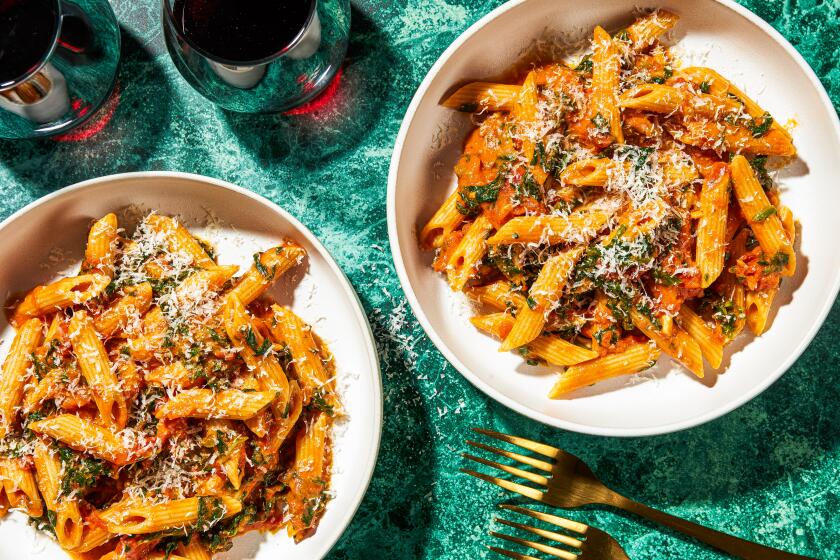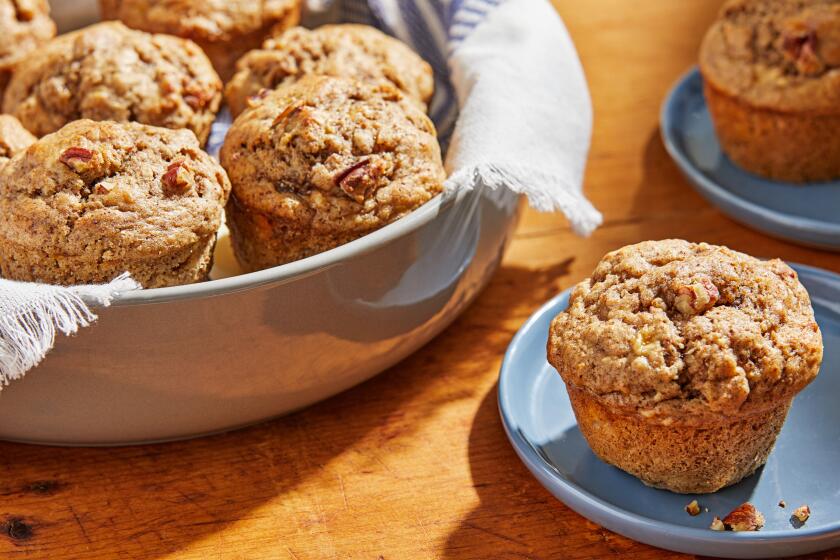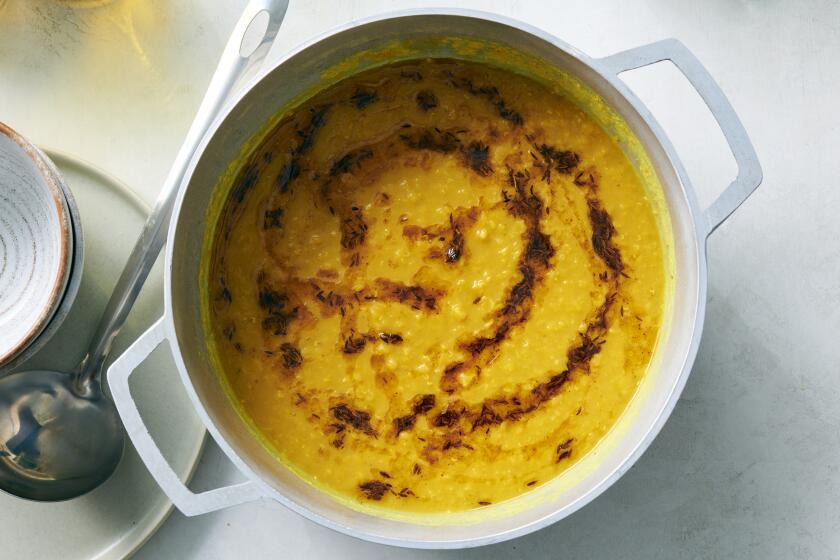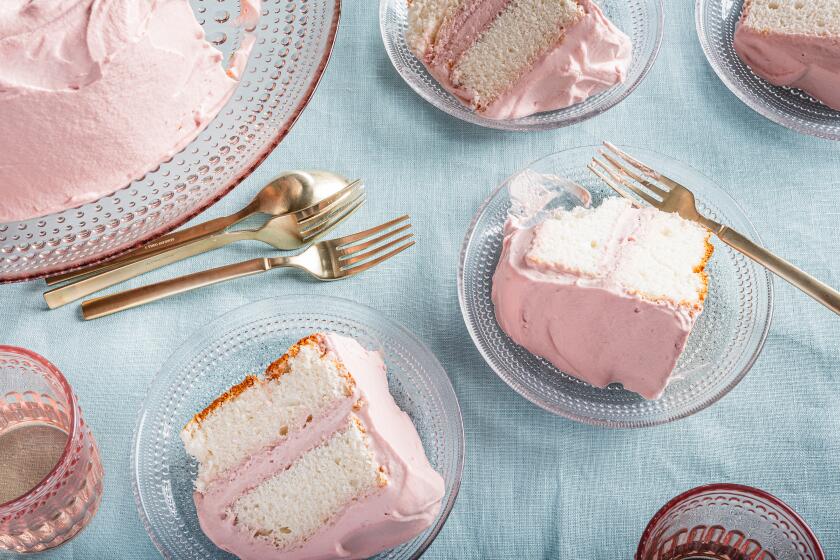Melon meets dessert potential

Sinking your teeth into truly ripe, devastatingly sweet melon can be an ethereal eating experience. It’s a small but mighty pleasure that can be expanded even further by turning your next honeydew or cantaloupe into dessert. Melons aren’t often used in sweets, but they should be. Cream and sugar actually fortify what honeydew and cantaloupe already have going for them: Their flesh is creamy when ripe, where the juicy edges by the seeds are so tattered that they seem almost milky and full of fat.
Whether it’s jade-tinged honeydew dripping with cool nectar or orange cantaloupe that’s ripened to honeyed creaminess, melons are, in many parts of the world, a nexus of late-summer’s bounty.
In 1992, the South Korean snack food company Binggrae debuted a new product, Melona, a honeydew-scented ice cream bar that leaned into melon’s delicate flavor. The pastel green and rectangular treat was an instant success, eventually making its way to the United States in 1995, flooding ice cream coolers from Atlanta’s Buford Highway, where Korean businesses abounded, to the shores of Hawaii, where Melona was especially popular.
If you’ve never bitten into a Melona (often called “melon bar” colloquially), then you should head to your nearest Korean grocery store and snag a box immediately. The texture will surprise you: It’s softer than a fudge pop — less icy. Creamy and stretchy and even a little chewy, it melts gloriously, with the kind of tongue-coating slow melt that’s characteristic of the best kulfi and semifreddo. “Gelato on a stick” is how Binggrae describes it.
Most of all, it’s less sweet than many ice creams in the States, fragrant with essence of honeydew (tasting as if it has been dipped in both honey and dew).
Similarly, these cheesecake bars celebrate melon for what it is: a quietly aromatic fruit, full of juice and untapped potential. Fresh cantaloupe purées into a smooth, fluffy pulp to flavor a cheesecake base that doesn’t require baking, thanks to gelatin. For the smoothest texture and the best set, powdered gelatin first needs to be bloomed in water, turning it into a translucent jelly, before it is whisked into hot, scalded cream to dissolve completely. Cream cheese helps deliver voluptuous texture, while also lending savory balance and accentuating melon’s soft, floral flavor.
No-Bake Melon Cheesecake Bars
Reminiscent of creamy, honeydew-scented Korean ice cream bars, this no-bake cheesecake leans into a fruit flavor that hasn’t had enough time in the sun: melon. Here, fresh cantaloupe purées into a smooth, fluffy pulp that sets into cheesecake, thanks to gelatin. Where the thick, salty-sweet base layer of buttery crackers will satisfy the crust lovers out there, the creamy, soft-set filling will change minds about what melon can truly do. Though the final drizzle of honey is optional, its floral taste works beautifully with the cantaloupe.
Makes 16 bars
FOR THE CRUST:
9 ½ ounces graham crackers (about 18 whole crackers)
½ cup unsalted butter, melted
2 tablespoons sugar
½ teaspoon kosher salt (Diamond Crystal)
FOR THE FILLING:
2 (¼-ounce) packets powdered gelatin (about 5 teaspoons)
1 ¼ pounds peeled cantaloupe, diced (about 3 cups)
1 (8-ounce) package cream cheese, at room temperature
½ cup sugar
¼ teaspoon kosher salt (Diamond Crystal)
½ cup heavy whipping cream
Honey, for drizzling (optional)
Prepare the crust: Place the graham crackers in a resealable plastic bag. Close the bag and, using a rolling pin, heavy can or other blunt object, crush the graham crackers into a coarse rubble. To the bag, add the melted butter, sugar and salt, and mix thoroughly.
Transfer the crumbs to an 8- or 9-inch square baking pan and press into the bottom of the pan with your hands, forming a thick, sturdy base. Place in the freezer to set while you make the filling.
Make the filling: In a small bowl or measuring cup, stir together ¼ cup cold tap water and the gelatin. Let sit to bloom. Meanwhile, use a blender to purée the cantaloupe, cream cheese, sugar and salt until smooth.
Heat the cream in a small saucepan on the stovetop over medium until simmering at the edges or in a small bowl in the microwave until hot to the touch, 45 to 60 seconds on high. Add the bloomed gelatin to the hot cream and stir vigorously until smooth. Transfer the cream to the blender and blend with the cantaloupe until smooth.
Take the pan out of the freezer and pour the filling over the graham cracker crust. Cover and refrigerate until set, at least 6 hours or up to overnight. Cut into bars and serve, drizzled with honey, if you like.
Kim writes for The New York Times, where this article originally ran.
Get Essential San Diego, weekday mornings
Get top headlines from the Union-Tribune in your inbox weekday mornings, including top news, local, sports, business, entertainment and opinion.
You may occasionally receive promotional content from the San Diego Union-Tribune.





